
Lucy Maud Montgomery, published as L. M. Montgomery, was a Canadian author best known for a collection of novels, essays, short stories, and poetry beginning in 1908 with Anne of Green Gables. She published 20 novels as well as 530 short stories, 500 poems, and 30 essays. Anne of Green Gables was an immediate success; the title character, orphan Anne Shirley, made Montgomery famous in her lifetime and gave her an international following. Most of the novels were set on Prince Edward Island, and those locations within Canada's smallest province became a literary landmark and popular tourist site—namely Green Gables farm, the genesis of Prince Edward Island National Park.

The Constant Nymph is a 1924 novel by Margaret Kennedy. It tells how a teenage girl, Tessa Sanger, falls in love with a family friend, who eventually marries her cousin. It explores the protagonists' complex family histories, focusing on class, education and creativity.

Stella Dorothea Gibbons was an English author, journalist, and poet. She established her reputation with her first novel, Cold Comfort Farm (1932) which has been reprinted many times. Although she was active as a writer for half a century, none of her later 22 novels or other literary works—which included a sequel to Cold Comfort Farm—achieved the same critical or popular success. Much of her work was long out of print before a modest revival in the 21st century.
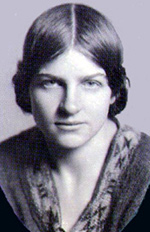
Naomi Mary Margaret Mitchison, Baroness Mitchison was a Scottish novelist and poet. Often called a doyenne of Scottish literature, she wrote more than 90 books of historical and science fiction, travel writing and autobiography. Her husband Dick Mitchison's life peerage in 1964 entitled her to call herself Lady Mitchison, but she never did. Her 1931 work, The Corn King and the Spring Queen, is seen by some as the prime 20th-century historical novel.
Hilda Campbell Vaughan was a Welsh novelist and short story writer writing in English. Her ten varied novels, set mostly in her native Radnorshire, concern rural communities and heroines. Her first novel was The Battle to the Weak (1925), her last The Candle and the Light (1954). She was married to the writer Charles Langbridge Morgan, who had an influence on her writings. Although favourably received by her contemporaries, Vaughan's works later received minimal attention. Rediscovery began in the 1980s and 1990s, along with a renewed interest in Welsh literature in English as a whole.
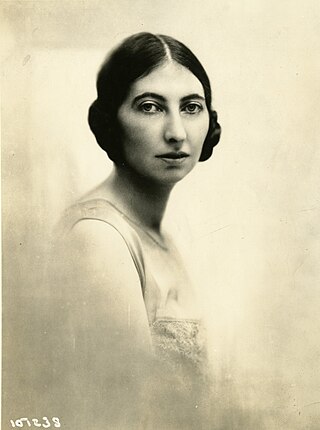
Margaret Moore Kennedy was an English novelist and playwright. Her most successful work, as a novel and as a play, was The Constant Nymph. She was a productive writer and several of her works were filmed. Three of her novels were reprinted in 2011.

The Constant Nymph is a 1943 romantic drama film starring Charles Boyer, Joan Fontaine, Alexis Smith, Brenda Marshall, Charles Coburn, May Whitty, and Peter Lorre with a famous score by Erich Wolfgang Korngold. It was adapted by Kathryn Scola from the 1924 novel of the same name by Margaret Kennedy and the 1926 play by Kennedy and Basil Dean and directed by Edmund Goulding.
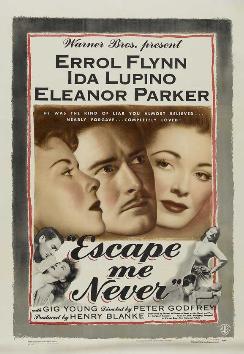
Escape Me Never is a 1947 American melodrama film directed by Peter Godfrey, and starring Errol Flynn, Ida Lupino, Eleanor Parker, and Gig Young.
Margaret Potter, née Margaret Newman, was a British writer of over 55 Romance, mystery and children's novels and family sagas, as well as many short stories. She wrote under her maiden and married names, and also under the pseudonyms of Anne Betteridge and Anne Melville. In 1967, her novel The Truth Game won the Romantic Novel of the Year Award from the Romantic Novelists' Association.

The Constant Nymph is a play based on the 1924 novel of the same name by Margaret Kennedy. The stage version, adapted by Kennedy and the director Basil Dean, was first performed in London in 1926, starring Noël Coward, Edna Best and Cathleen Nesbitt. It portrays the love of two women for a young composer, and the conflicts that arise. The tragic ending has the younger of the two – a teenager – die of heart failure.
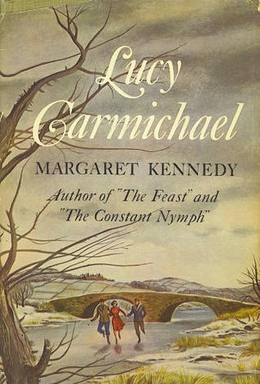
Lucy Carmichael is a 1951 romantic drama novel by the British writer Margaret Kennedy. It was her tenth published novel. It was well-received by critics but did not repeat the success of her earlier hits The Constant Nymph and Escape Me Never. It was a Literary Guild choice in America. In 2011 it was reissued by Faber and Faber.

The Midas Touch is a 1938 novel by the British writer Margaret Kennedy. It was her eighth novel, she then took a decade-long break before producing her next work The Feast in 1949. It was a Daily Mail Book of the Month.

The Ladies of Lyndon is a 1923 novel by the British writer Margaret Kennedy. Her debut novel, it was rell-received and she followed it the next year with her breakthrough novel The Constant Nymph.
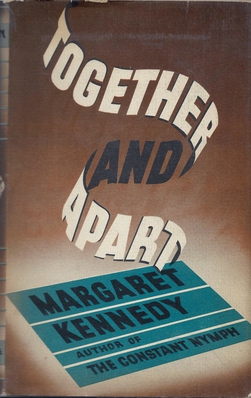
Together and Apart is a 1936 novel by the British writer Margaret Kennedy, her seventh novel. Kennedy was motivated to write it by an increasing number of divorces amongst her acquaintances.

Return I Dare Not is a 1931 novel by the British writer Margaret Kennedy. It was her fifth novel. Although it sold well, it did not match the success of The Constant Nymph and its sequel The Fool of the Family

The Feast is a 1949 novel by the British writer Margaret Kennedy. It is a modern reworking of the seven deadly sins. Her ninth novel, it was her first in more than a decade. It was a Literary Guild choice in America.

The Oracles is a 1955 comic novel by the British writer Margaret Kennedy. Kennedy was best known for The Constant Nymph and its sequel The Fool of the Family, but had enjoyed renewed success in the early 1950s, and her previous work Troy Chimneys was awarded the James Tait Black Memorial Prize. It was published in the United States by Rinehart under the alternative title of Act of God.

Troy Chimneys is a 1953 historical novel by the British writer Margaret Kennedy. It was awarded the James Tait Black Memorial Prize for Fiction.

The Fool of the Family is a 1930 novel by the British writer Margaret Kennedy. It is the sequel to her 1924 bestseller The Constant Nymph.

















